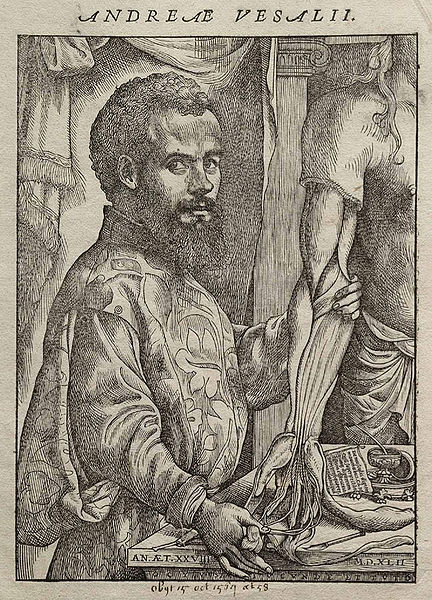De Humani Corporis Fabrica Libri Septem
De Humani Corporis Fabrica Libri Septem is a set of books on human anatomy written by Andreas Vesalius (1514–1564) and published in 1543. It was a major advance in the history of anatomy over the long-dominant work of Galen, and presented itself as such.
Title page. Andreae Vesalii Bruxellensis, scholae medicorum Patauinae professoris, de Humani corporis fabrica Libri septem (Andreas Vesalius of Brussels, professor at the school of medicine at Padua, on the fabric of the Human body in seven Books).
The Fabrica is known for its highly detailed illustrations of human dissections, often in allegorical poses.
Image from Andreas Vesalius' De humani corporis fabrica (1543), page 163.
Image from De humani corporis fabrica (1543), page 372.
Andries van Wezel, latinised as Andreas Vesalius, was an anatomist and physician who wrote De Humani Corporis Fabrica Libri Septem, what is considered to be one of the most influential books on human anatomy and a major advance over the long-dominant work of Galen. Vesalius is often referred to as the founder of modern human anatomy. He was born in Brussels, which was then part of the Habsburg Netherlands. He was a professor at the University of Padua (1537–1542) and later became Imperial physician at the court of Emperor Charles V.
Portrait by Jan van Calcar
The skeleton of Jakob Karrer, articulated by Vesalius in 1543
The Holy Roman Emperor, Charles V, who was an important patron of Vesalius
A portrait of Vesalius from his De Humani Corporis Fabrica (1543)








